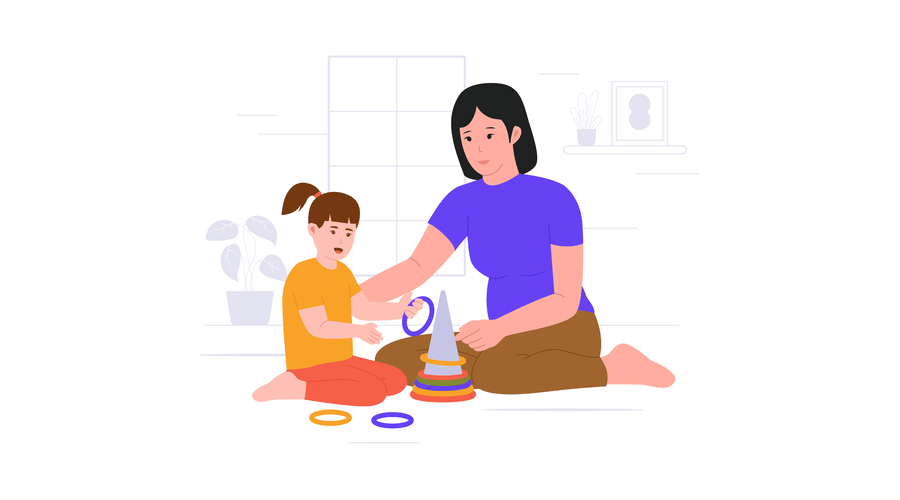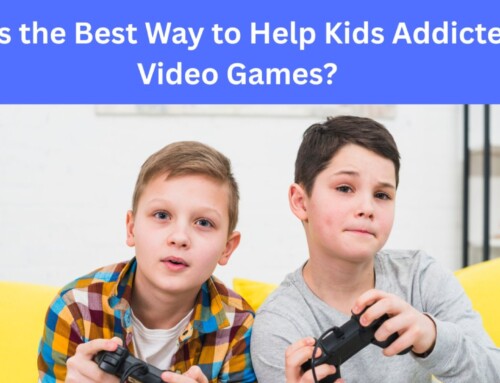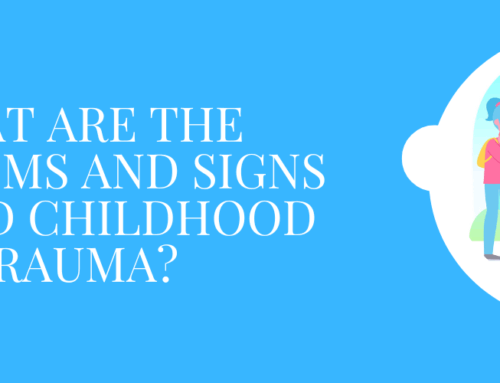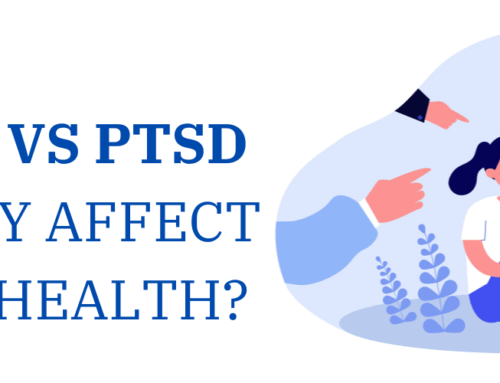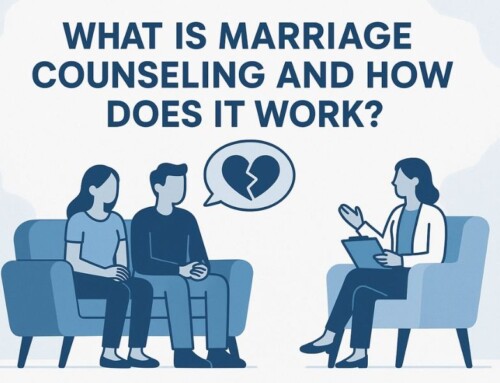What Is Play Therapy for Kids With ADHD, Autism & Trauma?
TL;DR
|
|---|
What if a child could show you how they feel, without saying a single word?
Play therapy is a powerful, evidence-based approach that helps children process emotions, trauma, and behavioral struggles using the natural language of childhood: play. Through tools like art, storytelling, sand trays, and role-playing, children express what they can’t yet verbalize, and begin to heal in ways that talk therapy often can’t reach.
But play therapy isn’t just about toys and games. It’s a structured process guided by trained therapists who understand that behind every drawing, every dollhouse scene, and every superhero story, there’s often something deeper: grief, anxiety, fear, or confusion finally finding a safe way out.
In this guide, we will cover what is the purpose of play therapy, how play therapy works, who it helps, and why it’s one of the most transformative tools in child and adolescent mental health today.
How Does Play Therapy Work for Children?
Play therapy creates a nurturing, age-appropriate environment where children express feelings they can’t yet articulate. According to the Association for Play Therapy, this approach empowers therapists to observe symbolic play, where toys become the child’s words, which helps reveal underlying emotional needs.
The Process: Safe Space + Symbolic Expression
In a thoughtfully arranged playroom, children interact with toys, art materials, sand trays, or puppets. Therapists use these interactions to:
- Observe emotion-laden narratives
- Reflect feelings to help children build emotional awareness
- Set gentle limits to ensure safety and foster trust
How Play Therapy Works for Children?
Research confirms that play therapy is effective for managing anxiety, behavior issues, grief, skill-building, and emotional regulation.
A 2024 study found occupational play improved social skills in neurodiverse children by up to 100% in some cases. The child-led nature of the approach enables play to become a conduit for healing and growth.
How Play Therapy Works for Autism & Neurodiverse Needs?
Play therapy has demonstrated meaningful benefits for children on the autism spectrum. Improvements were noted in:
- Social communication
- Emotional regulation
- Enhanced parent-child bonding when families are included
Moreover, a recent meta-analysis found that 22–28 weekly sessions of sandplay therapy significantly improved social communication in autistic children (standardized mean difference ≈ –1.42).
What Is Play Therapy Used For?
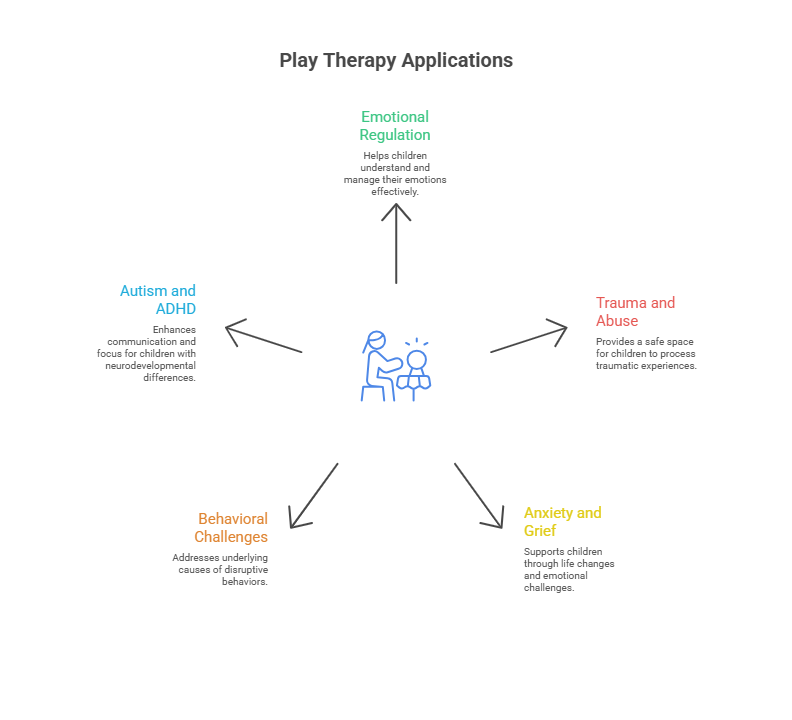
While it may look like fun from the outside, play therapy is carefully guided by trained therapists who know that play can say what words often can’t.
Here’s how play therapy makes a difference across a range of emotional and behavioral challenges:
1. Emotional Regulation
Big feelings are hard to manage, especially when you’re still learning how the world works.
Play therapy gives kids the tools to recognize emotions like anger, fear, or sadness and learn how to respond to them instead of acting them out. Through role-play, art, or storytelling, kids begin to understand what’s going on inside and build confidence in handling it.
2. Trauma and Abuse
For children who’ve experienced trauma, talking about what happened can feel scary or even impossible.
Play therapy allows them to explore those experiences at their own pace. A child might build a block tower and then knock it over repeatedly, not because they’re destructive, but because it mirrors their sense of loss or chaos. The therapist watches, listens, and gently helps the child rebuild, both the tower and themselves.
3. Anxiety, Grief, and Family Transitions
Play therapy can be a lifeline for children going through big life changes, like the death of a loved one, a move, or parental separation.
These events often leave kids confused and emotionally overwhelmed. Through symbolic play and supportive guidance, children begin to process their fears and ask the questions they might not know how to put into words.
4. Behavioral Challenges and Oppositional Defiant Patterns
If you’ve ever felt like your child is “always acting out,” there’s usually more beneath the surface.
Play therapy helps kids explore what’s driving those behaviors, whether it’s frustration, lack of control, or unmet emotional needs. Over time, children learn better ways to express themselves, regulate impulses, and feel heard without having to shout or shut down.
5. Autism Spectrum and ADHD
Play therapy is especially helpful for children who process the world differently.
For kids on the autism spectrum, play becomes a bridge to connection, helping them practice flexibility, emotional recognition, and communication. Children with ADHD benefit from the structure and creativity that play therapy offers, often learning how to focus, wait, and problem-solve in a way that makes sense to them.
Which Group Is Play Therapy Often Used to Treat?
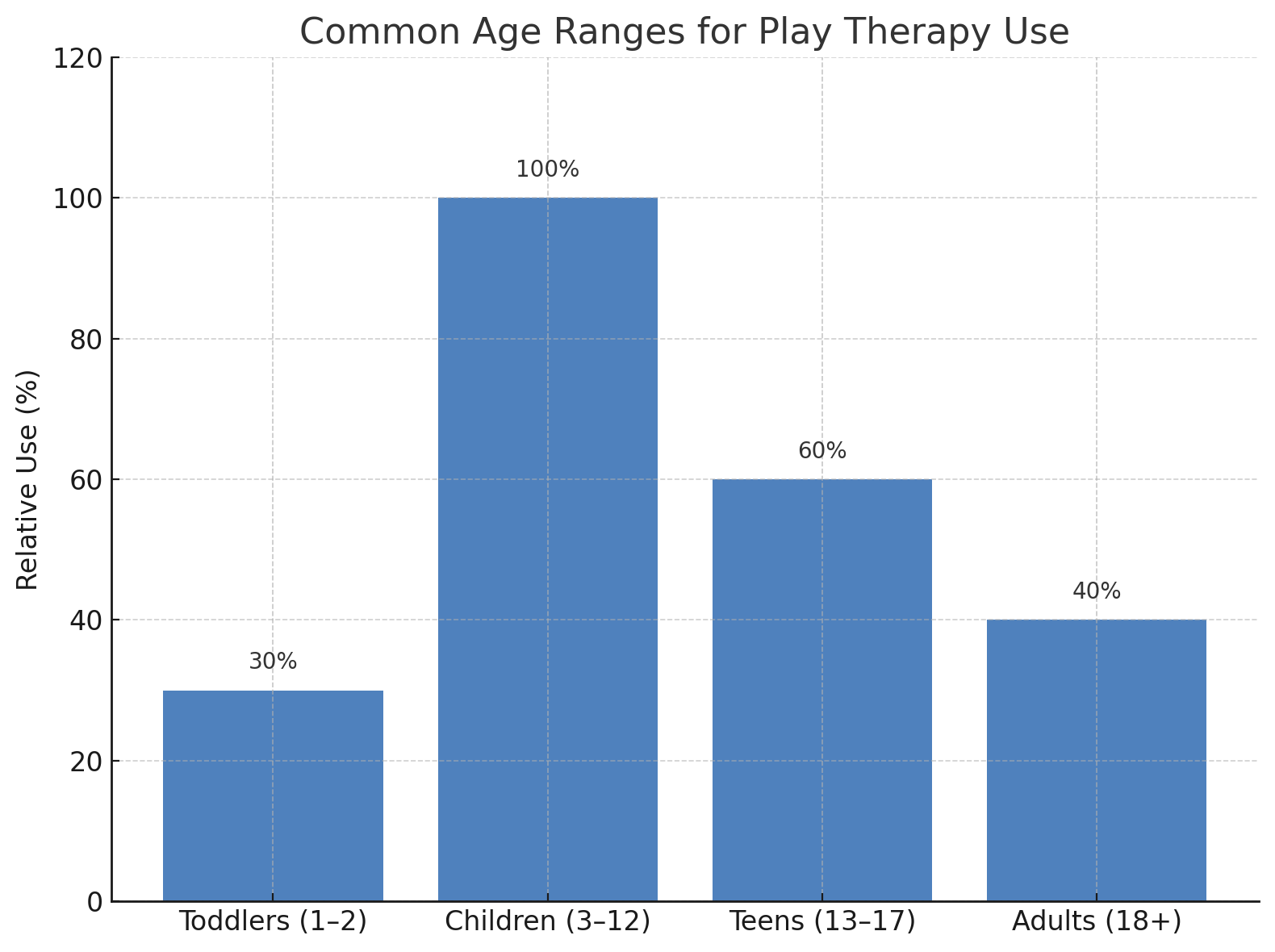
#image_title
While play therapy can benefit people of all ages, it’s most commonly used with children between the ages of 3 and 12.
That’s the developmental window when kids are old enough to engage in imaginative play, but not yet equipped to process complex emotions through conversation alone. It’s also a time when early intervention can have a profound and lasting impact on emotional resilience, social development, and self-esteem.
What are the Types of Play Therapy?
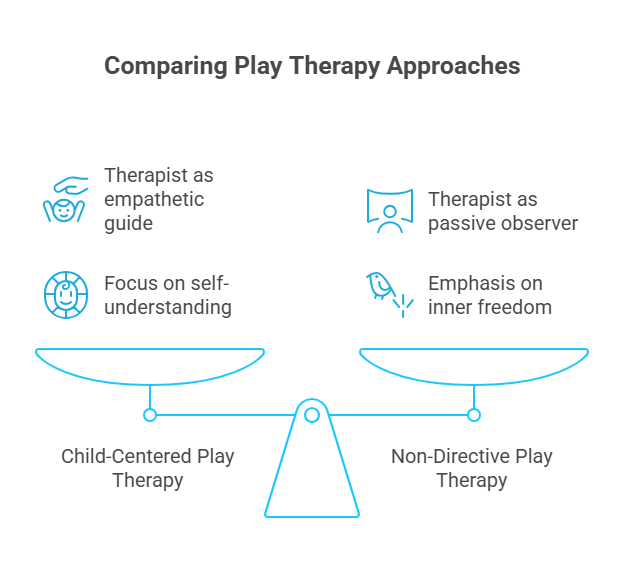
Not all play therapy looks the same.
In fact, depending on the child’s age, personality, and needs, the way a therapist uses play can vary quite a bit. Two of the most widely used and trusted approaches are Child-Centered Play Therapy and Non-Directive Play Therapy.
1. What is Child Centered Play Therapy?
Imagine a therapy session where your child isn’t being told what to say or how to feel, but instead, is simply invited to play. That’s the heart of Child-Centered Play Therapy (CCPT). It’s an approach where the child leads the way, and the therapist follows with empathy, patience, and trust.
There’s no script, no pressure. The child might build, destroy, draw, pretend, or repeat certain scenes, all of which tell a story. The therapist doesn’t interrupt or direct the play. Instead, they create a safe space and reflect back what they see with warmth and curiosity. Over time, that safety helps the child explore deeper emotions, build confidence, and learn to manage their feelings.
This type of therapy isn’t about changing a child, it’s about helping them understand themselves. And often, that’s the first step toward real change.
2. What is Non Directive Play Therapy?
Non-Directive Play Therapy shares the same foundation: trust the child to lead. But here, the therapist steps back even further, acting more like a witness than a guide. There’s no “lesson” or therapeutic goal being pushed. The idea is that when a child is given full freedom in a safe, consistent space, their inner world starts to unfold.
In a non-directive session, a child might use toys, sand trays, or puppets to act out scenarios they don’t have words for yet. These scenes often reveal fears, frustrations, or emotional patterns. The therapist observes and reflects, but rarely intervenes. Over time, children begin to process what’s inside on their own terms, and with surprising insight.
This method is especially powerful for kids who feel over-directed in other parts of their lives, at school, at home, or in previous therapy experiences. Here, they’re in control, and that in itself can be healing.
If you are dealing with overwhelming emotions with your child, see our take on- Tips to Reach Defiant Children.
How Long Does Play Therapy Take to Work?
On average, most children begin to show noticeable progress in 12 to 20 sessions. For some, especially those dealing with mild anxiety or behavioral challenges, that might be enough. For others, particularly those processing trauma, grief, or complex family dynamics, longer-term support may be needed.
But it’s not just about the number of sessions. A lot depends on:
- The child’s readiness to engage
- The nature and depth of their emotional struggles
- Their relationship with the therapist
- How involved and consistent caregivers are at home
How Parents Can Support the Process at Home?
Play therapy doesn’t stop when the session ends. In fact, what happens outside the playroom is just as important. Parents can support their child’s progress by:
- Creating emotional safety at home (listening without fixing or judging)
- Respecting the process (some kids need time to open up)
- Keeping routines consistent, which helps children feel more in control
- Staying connected with the therapist to align on goals and reinforce strategies
It’s also worth remembering: even if a child isn’t “talking about” therapy at home, they’re still doing the work. Healing often happens in layers, and play therapy helps peel those back gently, at a pace the child can handle.
Why Families Trust Total Life Counseling for Play Therapy?
At Total Life Counseling, licensed child and adolescent therapists use the therapeutic power of play to help children express emotions, build coping skills, and restore emotional balance.
What You Can Expect:
- Child-centered and non-directive play therapy that meets kids where they are
- Specialized support for trauma, grief, domestic violence, and chronic stress
- Care for behavioral disorders, oppositional defiance, and attention deficit hyperactivity disorder
- Expertise in autism-focused therapy and emotion regulation for neurodiverse children
- Services led by Registered Play Therapists and Licensed Mental Health Counselors
- Integrated care parent coaching, family counseling, and faith-based therapy available
Request a free 15-minute consultation to help you take the first step with clarity and confidence.
Conclusion
For children, play isn’t a break from reality, it is reality. It’s how they process the world, test limits, express fear, explore identity, and ask for help without saying a word.
That’s why play therapy works. It doesn’t force children to explain what they don’t yet understand. Instead, it meets them where they are, gently inviting healing through imagination, movement, and connection. Whether your child is navigating anxiety, behavioral struggles, trauma, or the stress of change, play therapy gives them a voice in the safest, most natural way they know: through play.
And for families watching their child struggle with things they can’t quite name, that’s more than hope. It’s a way forward.
Frequently Asked Questions
1. Who is qualified to provide play therapy?
Play therapists, school counselors, social workers, and other mental health practitioners may offer play therapy, but only those with play therapy credentials or certification (like a registered play therapist) are trained in its specific methods and ethics.
2. Is play therapy a form of psychotherapy?
Yes, play therapy is a form of psychotherapy that uses play activities as a natural medium of expression, especially for young children dealing with emotional challenges, trauma, or behavioral disorders.
3. How does play therapy help during a traumatic event?
In a safe environment, children can express and process a traumatic event through therapeutic play. It enables positive change without needing to verbalize pain they may not fully understand.
4. Can play therapy support children with chronic illness?
Yes, play therapy techniques can support children facing chronic illness by offering emotional relief, improving resilience, and helping family members better understand and respond to their child’s emotional needs.
5. What’s the difference between play therapy and art therapy?
While both are forms of therapy, art therapy focuses on creative expression through visual arts, while play therapy uses broader play activities like toys, stories, or games to support emotional healing.
6. What are the benefits of play therapy in schools?
School counselors use play therapy approaches, including group play therapy, to reduce behavioral difficulties, support learning, and foster positive effects on peer relationships, especially for children with attention deficit hyperactivity disorder or family stress like domestic violence.
7. What do studies say about the effectiveness of play therapy?
According to the International Journal of Play Therapy, what is play therapy for adults shows strong outcomes in control group studies, particularly in treating anxiety, trauma, and behavioral disorders in children ages 3 to 12, as it may be considered one of the types of therapy available for these issues.
8. Why is a child’s play important in therapy?
Child play plays an important role in healing. It’s a child’s most natural way to communicate, and play therapists use that to unlock emotions and drive positive change gently and effectively.
Filed in: Gemima McMahon, Play Therapy
Share This Story, Choose Your Platform!
Total Life Counseling Center consists of Licensed Counselors, masters level therapists, Español counselors, Licensed Mental Health Counselors, business coaches, and image enhancement coaches who provide counseling for emotional, mental, physical and spiritual care including marriage, individual, family, substance abuse and more. TLC’s family, trauma and marriage experts have been interviewed on National and Local TV/Radio over 200 times for their expert advice on Fox News, OWN, WETV, ABC’s Medical Minute and more. Our skilled counselors are relational, approachable and specialists providing therapy services in the Central Florida area including: Orlando, Winter Park, MetroWest, Windermere, Dr. Phillips, East Orlando, Lake Mary, and Clermont, Boca Raton Florida, and Dallas, TX.

